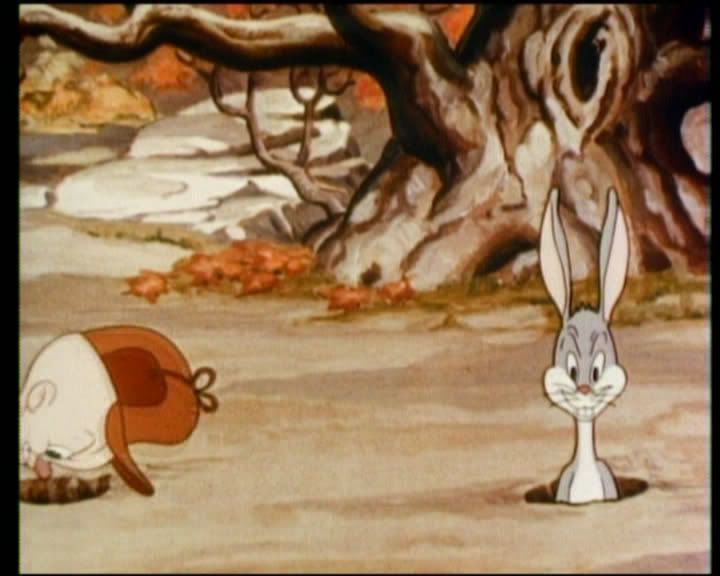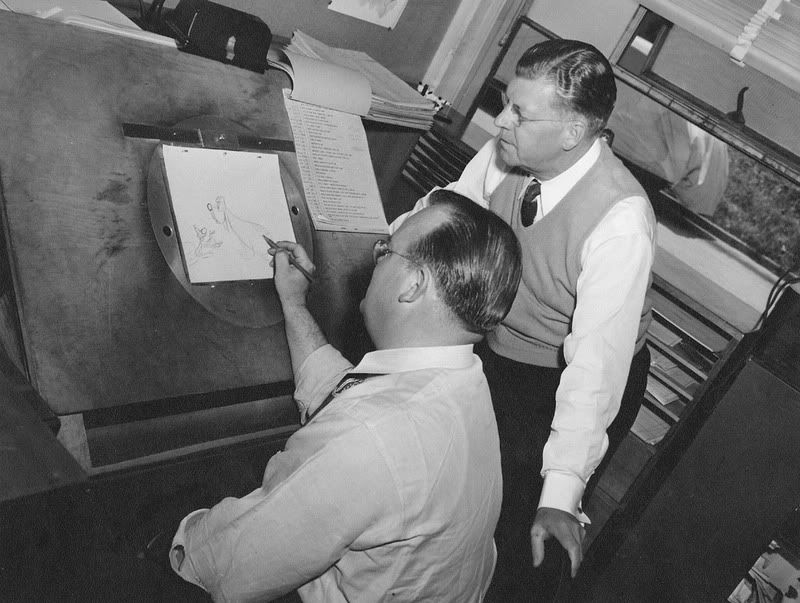Tex Avery's Animation Legacy

Fred "Tex" Avery was one of the main proponents of the Golden Age of American animation, an era that saw Avery himself create characters like Bugs Bunny, Daffy Duck, Droopy Dog, and many more. He worked at both Warner Bros. and MGM Studios, expanding his reach and influence. He helped usher in a new style of animation that broke away from the strict realism that Walt Disney popularized and brought in crazy characters, sight gags, and other elements not possible in live-action. His legacy and work have been preserved and respected through DVD collections and films such as Who Framed Roger Rabbit, but his impressive resume deserves a closer look. Avery's 1940 film, "A Wild Hare" would be the first official appearance of Bugs Bunny.
Avery's 1940 film, "A Wild Hare" would be the first official appearance of Bugs Bunny.
While Tex Avery did a little bit of early animation work, it wasn't until he joined Warner Bros. in 1935 through the Leon Schlesinger Productions studio nicknamed "Termite Terrace" that he really hit his stride. He worked alongside big names like Bob Clampett and Chuck Jones, who would all have a hand in creating the memorable cast of Looney Tunes characters. One of his first creations would be Daffy Duck, first seen in the 1937 film, "Porky's Duck Hunt". While there have been many different interpretations of Daffy, the original Avery version had him as a zany, loony duck that would bounce around everywhere shouting, "Hoo-hoo! Hoo-Hoo! Hoo-hoo!" The short also featured Porky in a hunter-type role, which would later manifest itself in Elmer Fudd. "A Wild Hare" is the first true debut of Bugs Bunny, although he was previously seen in various films before his trademark demeanor and personality. Avery inadvertently made up Bugs' catchphrase, "What's up, doc?" after a common phrase used in his home state of Texas. He only did a handful of Bugs Bunny cartoons before leaving the studio in 1941 after creative disputes, but he helped lay down the groundwork for the rest of the Looney Tunes. While most people are more familiar with the streamlined and modern cartoons that were to come later, Tex Avery was apart of that vision that helped them come to be. Tex Avery's time at MGM Studios under director Fred Quimby allowed him more creative freedom.
Tex Avery's time at MGM Studios under director Fred Quimby allowed him more creative freedom.
Most probably know Avery better for his work at Metro-Goldwyn-Mayer than with Warner Bros. Working with Fred Quimby, he was allowed to stretch his creative wings further than before. Almost everything was a little bit bigger in scope, with higher budget animation, even more lunacy, controversial topics, and new animation ideas. While the characters he created may not be as memorable as the Looney Tunes, the sheer quality of the films shines through. His most popular character is most likely Droopy. He was a small, slow-moving and talking dog that always managed to win out in the end against his opponent. Making his debut in 1943's "Dumbhounded", he was very subdued and was known for showing very little outward emotion.  Some of the more popular and risqué cartoons he did featured the Wolf and the racy pin-up girl unofficially dubbed "Red". She made her debut in the critically acclaimed short, "Red Hot Riding Hood" in 1943 and influenced both audience and animators. She was seen as an amalgamation of big Hollywood stars like Betty Grable, Judy Garland, and Katharine Hepburn and was a popular wartime character. While she would sing a number in a club-type setting, the Wolf would use various sight gags and libido reactions as the crutch of the comedy. There were initial censorship issues, as the gags were deemed too explicit. She would make appearances in other shorts and take on a new role or name, but her overall look and symbolism would remain the same.
Some of the more popular and risqué cartoons he did featured the Wolf and the racy pin-up girl unofficially dubbed "Red". She made her debut in the critically acclaimed short, "Red Hot Riding Hood" in 1943 and influenced both audience and animators. She was seen as an amalgamation of big Hollywood stars like Betty Grable, Judy Garland, and Katharine Hepburn and was a popular wartime character. While she would sing a number in a club-type setting, the Wolf would use various sight gags and libido reactions as the crutch of the comedy. There were initial censorship issues, as the gags were deemed too explicit. She would make appearances in other shorts and take on a new role or name, but her overall look and symbolism would remain the same.
Other popular MGM works he created include a series of future-technology themed shorts such as " Car of Tomorrow" and "House of Tomorrow". They brought to life his vision and desire to go away from the realistic world of live action and spoofed commericals of the time. Cartoons like Uncle Tom's Cabana and Half-Pint Pygmy were controversial because of their "politically incorrect" depictions of different ethnicities, but the humor was never tasteless. Other popular films include "Magical Maestro", which shows a magician and an opera singer duking it out with a magic wand disguised as a conductor's baton. "King-Size Canary" is another acclaimed short as a series of animals go on an epic chase after finding a plant growth formula. While Avery's characters might not be as well-known as his Warner Bros. creations, he definitely found his groove during his time at MGM.
Tex Avery deserves praise for his visionary ideas and his contribution to animation. His influence can be felt throughout many cartoons, which many recent shows should take note of. Although we usually enjoy these cartoons at their face value and for nostalgia, the names behind the scenes should be credited for the foundation they laid down for future generations of animation.

